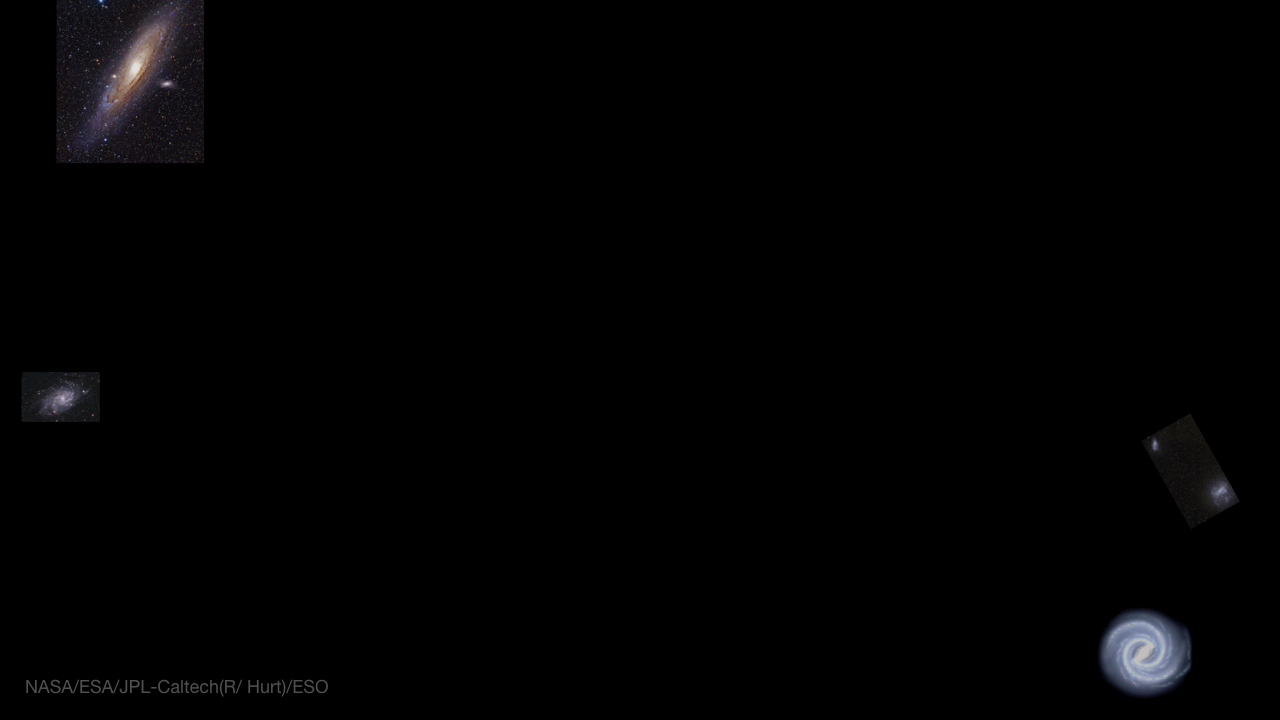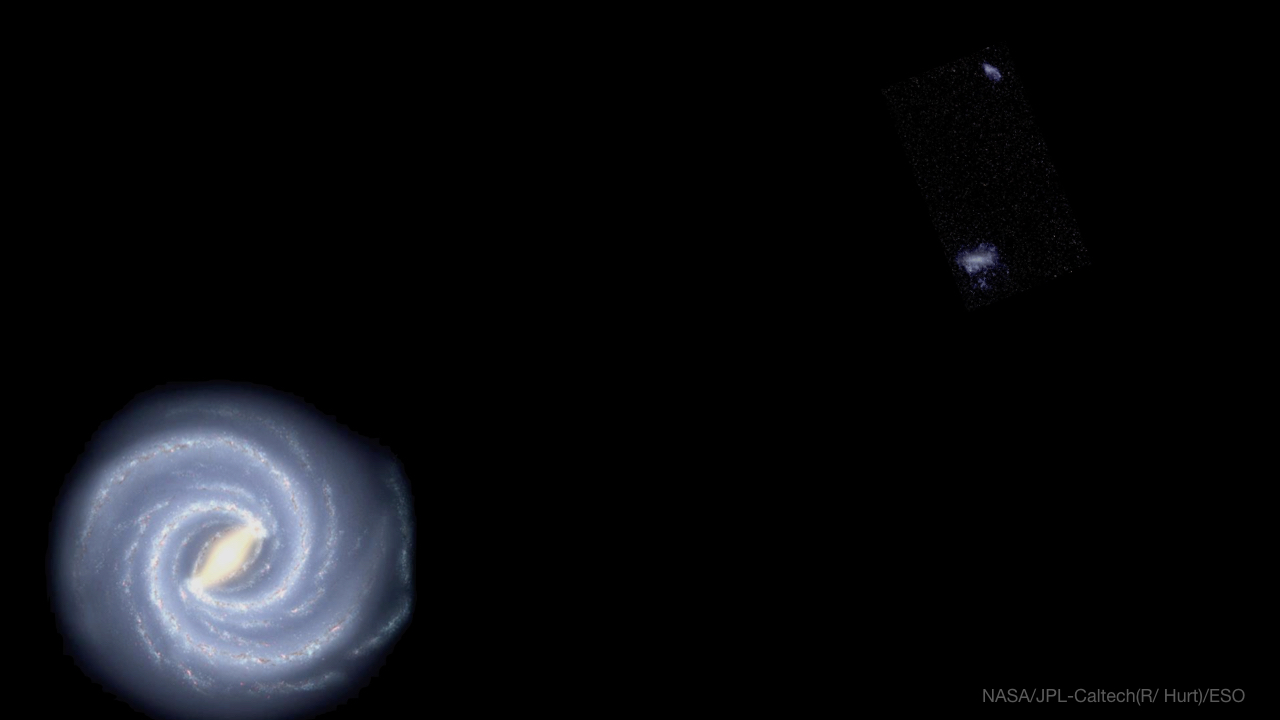Cosmic Creation Model Passes Another Test
Last May I debated with Peter Atkins, Oxford University chemist and well-known atheist, on the Unbelievable? radio show and video podcast. Toward the end of the debate, moderator Justin Brierley asked each of us to name a possible scientific discovery that, if proven true beyond any reasonable doubt, would cause us to abandon the philosophical worldview we were advocating. You can watch the debate here.
Atkins was not very forthcoming, to say the least. One of the possible scientific discoveries I named that would cause me to abandon my Christian faith would be scientific proof that there was no cosmic creation event. I explained that if future scientific discoveries were to prove beyond a reasonable doubt that the universe did not have a beginning and, therefore, that there was no cosmic Beginner, such discoveries would be catastrophic to the Christian faith and the clear teachings of the Bible.
The Bible says much more about the universe than that it had a beginning. Thousands of years before any astronomer speculated or articulated what we now know as the big bang theory of the universe, six different Bible authors in multiple books of the Bible declared the four fundamental features of the big bang creation model:
- The universe has a beginning that includes the beginning of space and time.
- The universe has expanded and continues to expand from its space-time beginning.
- The laws of physics that govern the universe have never changed.
- One of the laws governing the universe is a pervasive law of decay.
Any system that expands under a pervasive law of decay gets colder and colder as it ages. Hence, the Bible really is a big bang book.
Years ago, at the encouragement and with the assistance of theologian John Rea, I wrote an article entitled “Big Bang—the Bible Taught It First.”1 The article is available online here and (with minor edits) appears in my books The Creator and the Cosmos2 and A Matter of Days.3
In science, the success of any theory, model, or hypothesis is measured by how well the predicted features of the theory, model, or hypothesis are verified by advancing experiments and observations. By this measure, the biblically predicted big bang creation model has fared phenomenally well. In the four editions of The Creator and the Cosmos I have documented over a 25-year period how the more astronomers learn about the universe, the more observational evidence they accumulate for the veracity of the big bang creation model. Furthermore, the more astronomers learn about the universe, the more detailed a big bang model they have been able to build.
Today, astronomers possess a very detailed big bang creation model. In the astronomical literature it is referred to as the ΛCDM model. The ΛCDM big bang model refers to a universe with a big bang beginning where dark energy, Λ, is the dominant component of the universe, and cold dark matter (weakly interacting particles moving at low velocities relative to the velocity of light), CDM, is the second most predominant component.
A major prediction of the ΛCDM big bang model is that “hierarchical evolution occurs on all mass scales.”4 In layman’s language, this means that large galaxies will have smaller satellite galaxies and that the larger satellite galaxies will have still smaller satellite galaxies. The ΛCDM model also predicts the number and the sizes of satellite galaxies each galaxy of a given mass should possess.
A decade ago, many astronomers expressed doubts about the ΛCDM model because they were not seeing the number of dwarf satellite galaxies for the Milky Way and Andromeda Galaxies that the ΛCDM model predicted. It turned out that the majority of dwarf satellite galaxies were very diffuse and, hence, extremely difficult to detect. Only recently have astronomers developed the telescope power to find the full number of dwarf satellite galaxies for the Milky Way and Andromeda Galaxies predicted by the ΛCDM model. I wrote about the discoveries of these “missing” dwarf satellite galaxies here,5 here,6 here,7 and here.8 The biggest challenge, finding the Andromeda Galaxy’s missing dwarf galaxies, has been largely accomplished by the PAndAS Project.9
Now, for the first time, astronomers have found satellite galaxies of satellite galaxies. The Local Group is the small cluster of galaxies of which the Milky Way Galaxy and the Andromeda Galaxy are the two largest members (see figure 1). The largest satellite galaxies in the Local Group are the Large and Small Magellanic Clouds (see the featured image). Both are satellite galaxies of the Milky Way Galaxy. Figure 2 shows a to-scale map that I constructed of the Milky Way/Magellanic Clouds system.
Figure 1: Map of the Larger Local Group Galaxies. The Andromeda Galaxy and its two largest satellite galaxies, M32 and NGC 205, are to the upper left. The Triangulum Galaxy is to the mid left. The Milky Way Galaxy and the Large and Small Magellanic Clouds are to the bottom right. The spatial separation between the Andromeda and Milky Way Galaxies is nearly double that shown in the above map. Credit for the galaxy images: NASA/ESO. Credit for the reconstructed map of the Milky Way Galaxy: NASA/JPL-Caltech (R. Hurt). Credit for the map of the Local Group: Hugh Ross
Figure 2: The Milky Way Galaxy/Magellanic Clouds System. Credit for the Magellanic Clouds images: European Southern Observatory. Credit for the reconstructed map of the Milky Way Galaxy: NASA/JPL-Caltech (R. Hurt). Credit for the map of the Milky Way Galaxy/Magellanic Clouds system: Hugh Ross
A team of astronomers from Canada, Spain, and the United States, led by Nitya Kallivayalil, presented proper motion measurements for 13 of the 32 newly discovered dwarf galaxies in the Gaia Data Release 2.10 A different group of astronomers had performed radial velocity measurements for all 13 of these dwarf galaxies. Therefore, for all 13 galaxies, Kallivayalil’s team knew the motions of these galaxies in all three spatial dimensions.
With these measured 3D motions of the 13 dwarf galaxies, Kallivayalil’s team was able to establish that 4 of the galaxies, Hor1, Car2, Car3, and Hyi1, were satellite galaxies of the Magellanic Clouds. Kallivayalil’s team also determined that two other dwarf galaxies, Hya2 and Dra2, were probable satellite galaxies of the Magellanic Clouds. Thus, another important prediction of the ΛCDM big bang creation model has now been confirmed: satellite galaxies of large galaxies themselves possess satellite galaxies.
The discovery by the five Korean astronomers and the implications of their discovery yield yet one more example of how the more we learn about the universe the more evidence and confidence we gain for what the Bible has taught about the origin and history of the universe and for One responsible for that origin and history.
featured image: The Large and Small Magellanic Clouds
The Large Magellanic Cloud to the upper right is the largest satellite galaxy in the Local Group. The Small Magellanic Cloud to the left is the second largest satellite galaxy in the Local Group. The bright spot to the left of the Small Magellanic Cloud is 47 Tucanae, a foreground globular cluster that is part of the Milky Way Galaxy.
credit: European Southern Observatory
Endnotes
- Hugh Ross and John Rea, “Big Bang—the Bible Taught It First!” Facts for Faith, July 1, 2000, reasons.org/explore/publications/facts-for-faith/read/facts-for-faith/2000/07/01/big-bang-the-bible-taught-it-first!
- Hugh Ross, The Creator and the Cosmos, 4th ed. (Covina, CA: RTB Press, 2017), 25–31.
- Hugh Ross, A Matter of Days, 2nd ed. (Covina, CA: RTB Press, 2015), 135–44.
- Nitya Kallivayalil et al., “The Missing Satellites of the Magellanic Clouds? Gaia Proper Motions of the Recently Discovered Ultra-Faint Galaxies,” Astrophysical Journal 867 (November 1, 2018): id. 19, page 1, doi:10.3847/1538-4357/aadfee.
- Hugh Ross, “Dwarf Galaxies Test Big Bang,” Today’s New Reason to Believe (blog), Reasons to Believe, December 8, 2008, reasons.org/todays-new-reason-to-believe/read/tnrtb/2008/12/08/dwarf-galaxies-test-big-bang.
- Hugh Ross, “Another Dwarf Galaxy Test of Big Bang Cosmology,” Today’s New Reason to Believe (blog), Reasons to Believe, April 27, 2009, reasons.org/todays-new-reason-to-believe/read/tnrtb/2009/04/27/another-dwarf-galaxy-test-of-big-bang-cosmology.
- Hugh Ross, “The Least Luminous Known Galaxy,” Today’s New Reason to Believe (blog), Reasons to Believe, July 6, 2009, reasons.org/todays-new-reason-to-believe/read/tnrtb/2009/07/06/the-least-luminous-known-galaxy.
- Hugh Ross, “The Darkest Galaxy,” Today’s New Reason to Believe (blog), Reasons to Believe, August 22, 2011, reasons.org/todays-new-reason-to-believe/read/tnrtb/2011/08/22/the-darkest-galaxy.
- Nicolas F. Martin et al., “The PAndAS View of the Andromeda Satellite System. II. Detailed Properties of 23 M31 Dwarf Spheroidal Galaxies,” Astrophysical Journal 833 (December 15, 2016): id. 167, doi:10.3847/1538-4357/833/2/167; Nicolas F. Martin et al., “A Rogues’ Gallery of Andromeda’s Dwarf Galaxies. I. A Predominance of Red Horizontal Branches,” Astrophysical Journal 850 (November 20, 2017): id. 16, doi:10.3847/1538-4357/aa901a.
- Kallivayalil et al., “Missing Satellites of the Magellanic Clouds?.”








